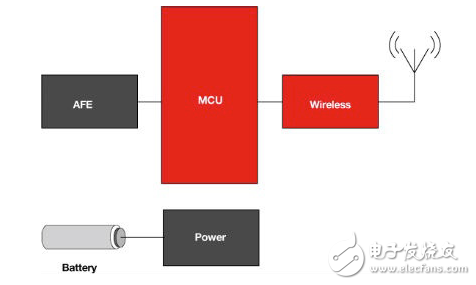
资料下载

无线传感器设计中功耗与性能的平衡
无线传感器设计中功耗与性能的平衡
无论是电池供电,甚至能源消耗,无线传感器设计需要仔细权衡电力需求和运营能力,以达到性能目标。对于工程师来说,转化为精心挑选的MCUs和收发器能够满足严格的功率预算,可以在范围和灵敏度不同无线网络提供传感器数据。本文将展示如何将这些设计目标,可以满足使用一系列的MCU,收发器和集成解决方案供应商如AMS、EnOcean、集成、芯片技术,Silicon Labs、德克萨斯文书。
在其最基本的形式,一个无线传感器包括主机单片机和无线收发,以及电源系统和一个模拟前端(AFE)不同的复杂性取决于应用(图1)。对于设计师来说,既扩展范围和无线传感器的设计最大功率效率要求的超低功耗MCU和收音机仔细选择。

Figure 1: In a wireless sensor, the MCU and transceiver are key components in determining power and communications performance. (Courtesy of Texas Instruments.)
Although active power consumption specifications quoted in datasheets may be sufficient in some cases, selection typically requires a broader look at device performance characteristics associated with the device‘s available low-power operating modes. For example, an MCU that specs out with slightly higher active power requirements than another might still provide superior overall power savings if it offers different options for low-power modes and if it includes features and characteristics that ensure maximum time spent in its lowest power modes.
That notion of heightened efficiency fuels a trend toward use of 16- and even 32-bit MCUs in applications long considered the sole domain of 8-bit MCUs. With their wider data paths, 16- and 32-bit MCUs offer greater code density that in many cases allows for more efficient code execution – translating to faster completion of tasks and a quicker return to low-power sleep modes.
声明:本文内容及配图由入驻作者撰写或者入驻合作网站授权转载。文章观点仅代表作者本人,不代表电子发烧友网立场。文章及其配图仅供工程师学习之用,如有内容侵权或者其他违规问题,请联系本站处理。 举报投诉
- 相关下载
- 相关文章






